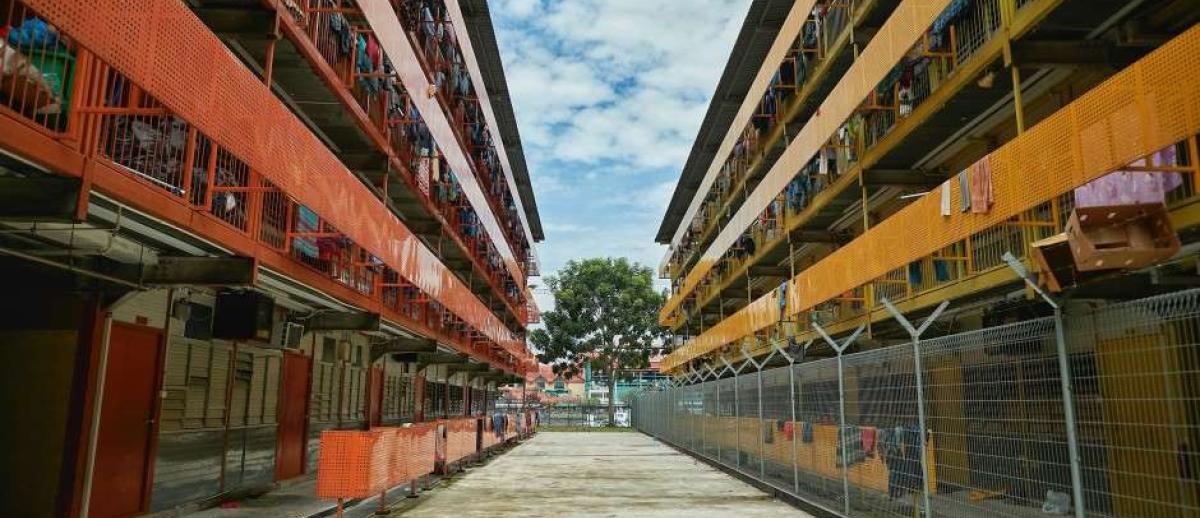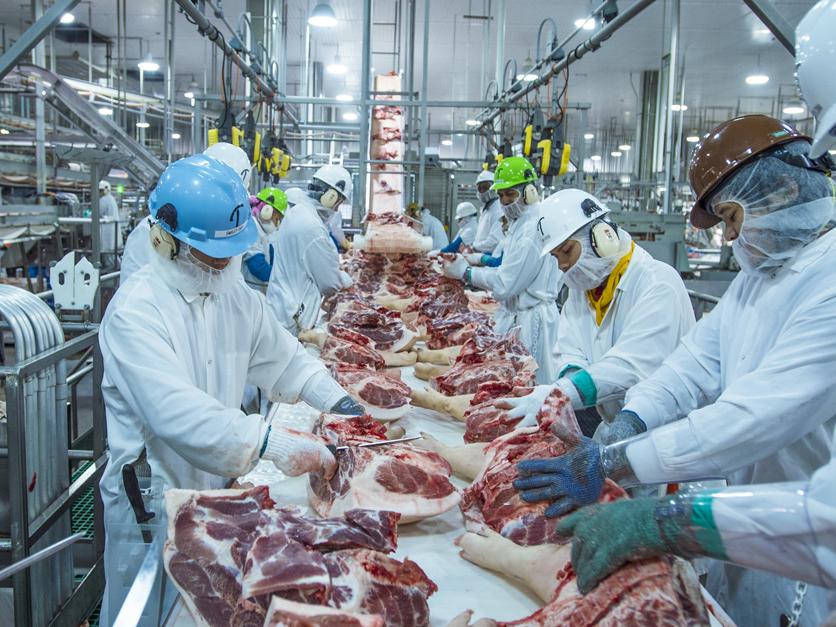Pandemic Geography: What Happens Where
archive


A view of the Punggol S11 foreign worker dormitory in Singapore. (Photo: EPA)
Pandemic Geography: What Happens Where
As those scary looking red circles on the Johns Hopkins University map of the pandemic get bigger each day, we all need to think about where the disease is and how it is spreading. The focus has shifted from Wuhan to Tehran to Milan to Madrid and most recently to New York as outbreaks expanded in turn in all those places. Where next is of increasing concern as it seems likely that the large cities in Asia and Africa will face mounting casualties in coming weeks. Some Latin American states already have high death rates; the media stories from Ecuador remind us that the official statistics being reported are frequently running well behind what is actually happening. In some cases we may not have accurate numbers until well after this pandemic has passed its peak, and we don’t yet have a clue about when that may be.
The virus has been spread globally by workers, family members visiting relatives abroad, business travelers, conference attendees and, in many cases, tourists or sports fans moving across the world in airplanes and bringing viruses across national frontiers. Most international flights are now grounded. Tourism, the world’s largest industry by some calculations, has effectively been shut down in the last month, although this happened too late to prevent the global spread of the virus. One thing that has become clear in the last few weeks is that geography is crucial to understanding the progress of this disease and the attempts to deal with it in a timely fashion. Now that the initial spread has happened, how those big red circles will change in coming weeks depends on much more local effects.
Maybe the virus doesn’t discriminate, but both the spread of the disease and the outcomes for those infected does depend on their circumstances, on where they live and how effective the public health and social support systems are in particular places. Obviously, as well, the accuracy of the warnings about disease spread, the ability of authorities to introduce social isolation measures, and the willingness—and, crucially, the ability—of people to abide by those restrictions matters in terms of who gets sick when and where, with all the implications this has for the capacity of hospitals to treat those who are ill. Measures in one place may not be appropriate in another. The timing too may need to be right for them to be effective.
The comparison between Portugal where, relative to Spain next door, the case load and death rates are much smaller, is instructive. Worried about a very limited medical capacity to cope, authorities in Lisbon moved early to restrict public gatherings. Madrid did so later and the impact of those large gatherings in March has showed up in the Spanish death toll in recent weeks. Social distancing clearly works—so far it’s one of two things that we know for sure actually does! The other one is tracing contacts made by infected people and isolating them effectively. Yet this requires a functional health system with enough people to carry out the investigations, and the ability on the part of those contacted by this method to effectively self-isolate.
The key to all this is that people carry the virus and it spreads from person to person, mostly between people who spend time in each other’s company, whether in a sports stadium or in a bar after the game, in an apartment or house where people live together or, as seems to be a key problem in North America, in workplaces where people are close to each other. Assembly lines are a key fulcrum of the contagion—such as slaughterhouses and meat packing plants which have had to shut down recently because so many workers were sick—as is the service economy with its legions of often poorly paid workers in public transport, grocery stores and elsewhere, who are now suddenly deemed essential to our societies.
Understanding the spread of the virus requires looking at those specific geographic circumstances of where people have to be. Social isolation is a key tactic in slowing the spread of the disease but only some people can easily do this. Essential workers frequently can’t separate, even if their employers are willing and able to adapt workplaces and provide safety gear in time. The rate of infections in long term care facilities and nursing homes is high because of the proximity between patients and care givers, and the frequent necessity on the part of poorly paid and part time staff to move between facilities, spreading the virus inadvertently from one to another. This part of the pandemic has revealed numerous weaknesses in the public health systems of supposedly rich societies suffering the consequences of decades of under-investment in health care provision and pandemic preparation.

Workers at a US meat packing plant cutting pork.
For many white-collar workers, able to work from home because they have a home where they can do social distancing, staying away from other people is an option. For those who have other accommodation arrangements, this isn’t possible. One of the big worries in Singapore, where careful contact tracing and isolation initially worked to contain the pandemic, is the danger of hotspots of the virus causing disease spread in the dormitory accommodation that houses many of the immigrant workers that keep key parts of the city functioning. If you sleep in the same room with many others, and share kitchen and bathroom facilities, then social isolation is not an option and virus spread is easy. The Iranians at least understood this point early and furloughed numerous prisoners to try to slow disease spread where they were powerless to prevent it. This point about cramped quarters was clearly evident in the early outbreaks on board various cruise ships, and more recently in the high-profile situation aboard the USS Theodore Roosevelt, the American aircraft carrier where scrambled attempts were made to quarantine the crew in Guam, only after the captain went public asking for help. If you don’t have a home at all, then desperate measures may be called for, as the homeless folks in Vancouver, who have taken over a school in an attempt to survive, have made clear.
Understanding the spread of the virus requires looking at those specific geographic circumstances of where people have to be. Social isolation is a key tactic in slowing the spread of the disease but only some people can easily do this.
What is as yet unknown is how the pandemic will play out in the large slums in African and South Asian cities. Here, social isolation is impossible for the millions of people who live in close proximity in circumstances where health facilities are minimal. Will the disease move rapidly through these places leaving relatively few deaths due to the largely youthful populations there? Or will the other health difficulties combined with malnutrition in poverty-stricken areas lead to a high death toll? Sadly, we are about to find out. But interpreting the meaning of those scary red circles on maps showing the disease spread requires thinking through what the specific circumstances are in each place represented by each of the big dots. The virus doesn’t discriminate, but the places in which it appears dramatically shape the chances for survival among those who fall ill.
________
An earlier version of this essay originally appeared on the Balsillie School website: https://www.balsillieschool.ca/news/



